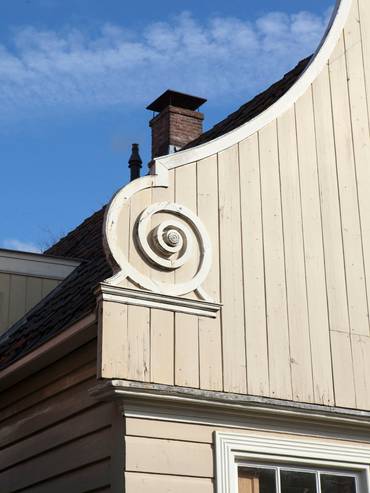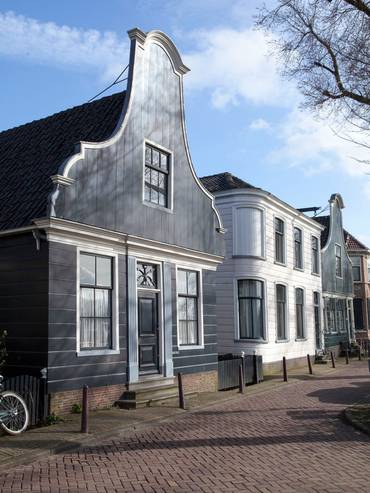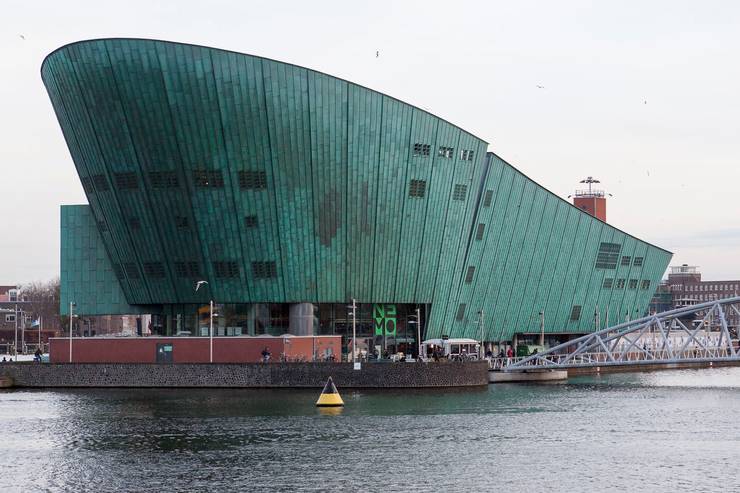Amsterdam travel guide
Architecture
Amsterdam’s architecture dates back to the 14th century and when you imagine the city it’s hard not to think in terms of canals, bridges and windmills. But the scope of design in the Dutch capital is wider and more diverse than the postcards might have you believe.


Nieuwendammerdijk, Noord
These distinctive pretty houses, lining a long and narrow street in Noord, tell the history of a small village on the IJ river. They date back to the 16th century and are made of wood (unlike the typical Amsterdam stone canal houses) to ensure the dyke could hold their weight.
Constructed during the golden age of shipbuilding, trade and maritime transport, the embellished abodes were the homes of captains, fishermen, ferrymen and lock-keepers, not to mention wealthy families (number 202-204 was built for shipbuilding magnate de Vries Lentsch). The neoclassical houses at numbers 300 and 308 were home to doctor Johann Georg Mezger, one of the founders of physiotherapy. Princess Sophia of Nassau, wife of the Swedish prince and later King Oscar II, gave him land in Nieuwendam to thank him for treating her oldest son.
Nieuwendammerdijk, 1023 BTSteigereiland, IJburg
Due to the city’s housing shortage, architects have been looking to the water, developing practical but good-looking floating homes. Nearly 75 of them now dot the artificial-island cluster of IJburg in the city’s east. A network of aluminium-surfaced jetties work as footpaths and create a link between the two and three-storey dwellings, which range from social housing to high-end abodes.
One cluster was designed by Marlies Rohmer Architects using glass and synthetic materials that resemble steel. The base is a hollow cement cube, which is poured in one go and takes into consideration heavy pieces of furniture such as pianos or bathtubs (a thicker slab of concrete on the opposite side acts as a counterweight). Once finished, the houses are pulled along the canals by barge to their destination.
Haringbuisdijk, 1086 VArohmer.nl


Nemo Science Museum, Eastern Docklands
Nemo’s copper-green hull, emerging from Oosterdok, is one of the boldest designs on the cityscape. Italian architect Renzo Piano called Amsterdam “a one-dimensional city” and this fuelled his vision to create an elevated piazza and observation terrace on the building’s roof. Piano’s main challenge was using the IJtunnel as Nemo’s foundation. The tunnel inspired his curved design: as it descends below the river the museum mirrors it, rising 22 metres above the water. Since its completion in 1997, Piano’s design has housed the Netherlands’ leading children’s science and technology museum. Its interior focuses attention on exhibits with minimal windows, straightforward orientation and neutral grey walls.
2 Oosterdok, 1011 VX+31 (0)20 531 3233
nemosciencemuseum.nl
Images: Jussi Puikkonen

